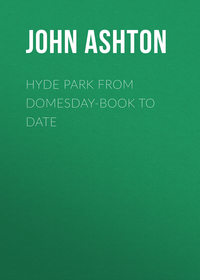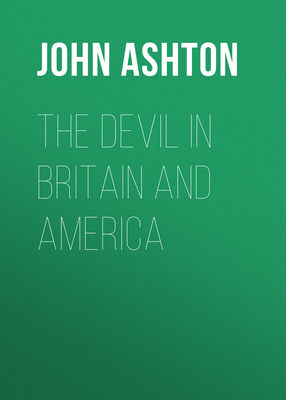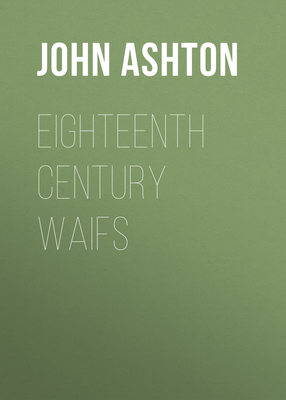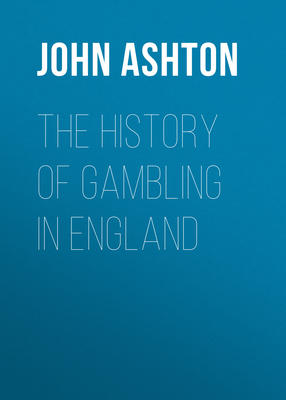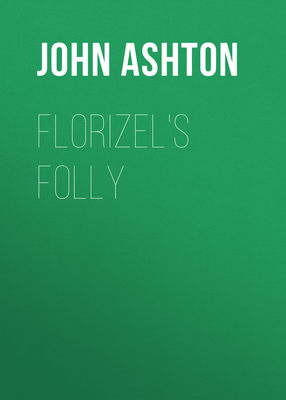Kitabı oku: «Hyde Park from Domesday-book to Date», sayfa 9
CHAPTER XIV
Volunteer reviews of 1803 – Review in honour of the Allied Sovereigns, 1814 – Popularity of Blücher – Review by the Queen in 1838 – Volunteer review, 1860.
As far as I can learn, there were no more grand Volunteer reviews in Hyde Park, until 26th Oct., 1803, and this, I think, is borne out by the “gush” of the Annual Register on the occasion, which would hardly have occurred had they been frequent. “This was a truly proud day for the country. It presented the sublime spectacle of a patriot Monarch, who reigns no less distinguished in the hearts of his people than on his throne, meeting the brave citizens of his metropolis, armed in defence of his crown and of the British Constitution; and, with the characteristic virtue of the sons of Albion, resolved to continue free, or gloriously to fall with the liberty and independence of their country. Such a spectacle is worthy of such a people: such a people are deserving of the superior blessings they possess.”
The Volunteers mustered 12,401, and they were reviewed by the King. With the exception of the Prince of Wales, all the Royal Princes were present, the Duke of Clarence “in the uniform of the Teddington Association.” The Queen was present, as were also the Princesses, and the royal party was joined by the refugee French Princes, Monsieur (afterwards Louis XVIII.) being dressed in green with red facings, the Prince de Condé, in white, faced with blue; the Duc de Bourbon in white, faced with red; and the Duc de Berri in green. There were no accidents, although there were some 200,000 spectators; “every person who could come from within a circle of twenty miles being collected. Many came to town from a distance of above a hundred miles to be present at the sight.”
“The éclat with which the grand review of the London district of volunteers went off on Wednesday, excited a laudable ambition in the breasts of the Westminster, Lambeth and Southwark corps, to surpass, if possible, their brethren in arms, in discipline, in zeal, and military appearance.” They mustered 14,676 men, but the total Volunteer force in the vicinity of the metropolis was then reckoned at 46,000. The morning of 28th October opened very dispiritingly, even worse than on the 26th.
“The fog, however, not content with equalling that of Wednesday, increased to such a degree, that, at half past seven, not a single object could be seen in the park, and several Corps would have passed by Oxford Street Gate, had they not been stopped there by a party of Life Guards stationed there to guard the entrance. The eager expectation which ushered in the morning now changed to fearful anxiety. It was too dark to observe the expression of the countenance; but everybody, in tones of despondency, began to express their apprehensions that all the beauty of the military spectacle would be lost, and that a glimpse of the troops could not be obtained, much less a full view of them, and the embellishments of the scene. The houses, scaffolds, carts, caravans, and carriages of all descriptions, drawn up for the accommodation of spectators along the Bayswater Road, instantly began to drop their prices; and would have fallen still lower, had not the fog fortunately begun to clear away about half past eight, when the business of the day again assumed a cheerful aspect, and the spectators eagerly assembled in amazing crowds, and to a still greater extent than on Wednesday.”
The King, Queen, and all the Royal family were present, but on this occasion there were no foreign visitors.
Although there were perpetual drills and inspections in Hyde Park, there does not seem to have been a grand review until the one which took place in honour, and in the presence of the Allied Sovereigns, the Emperor of Russia, and the King of Prussia, who were then on a visit to the Prince Regent, and it took place on Sunday, June 20, 1814. The following is The Times account of it.
“Yesterday, at an early hour, all the regular troops, together with most of the Volunteer Corps in the metropolis and its vicinity, were in motion to proceed to Hyde Park, for the purpose of being reviewed by the Prince Regent, and his Imperial and Royal visitants. Immense crowds of people, of all ranks, were at the same time seen flocking thither in every direction; and, in consequence of an excellent regulation, by which all carriages, except those of the Royal family, and all horsemen, except military officers, were prohibited from entering the Park, these spacious grounds afforded ample room and accommodation for the multitudes of spectators.
“By half past eight o’clock, all the different troops of the line, together with the corps of Yeomanry and Volunteers, had taken up the positions assigned to them. The line, which partly ran parallel with the wall of Kensington Gardens, extended from Buckden Hill to the Piccadilly gate of Hyde Park; a brigade of horse artillery formed the extreme right of the whole; next to them were drawn up successively in line, several regiments of Dragoons, the Royal Horse Guards, the Blues, the Queen’s Bays, and the Scots Greys; next followed two regiments of Light Horse, we believe the 9th and 13th; the Surrey Yeomanry, with the London Light Horse, and several other minor corps, completed the whole of the cavalry.
“The different battalions of the three regiments of Guards not at present employed on foreign service, headed the line of infantry. We did not observe any other regiment of regular troops, and the rest of the ground was occupied by battalions of Volunteers. They comprised most of the Volunteer Corps still existing in the metropolis; and though, in general, they did not muster very strong, yet, even in point of numbers, their appearance was respectable. These troops are not again likely to meet under arms for some time to come, and the close of their patriotic military career well merited the distinguished honour of this day’s review, by three of the most powerful Sovereigns in Europe.
“About ten o’clock, the Duke of York, accompanied by a numerous staff, rode down the line. Soon after, the firing of a gun announced that the Royal personages had entered the Park. They were preceded by a detachment of the 10th Hussars: the Prince Regent had, on his left, the Emperor of Russia, and on his right, the King of Prussia. The cortège of the sovereigns was extremely numerous, and of the most brilliant description, comprising all the distinguished military characters at present in London. Among others, Marshal Blücher, Prince Platoff, Lords Hill and Beresford were recognized and cheered by the spectators. The effect of the whole was impressive, from the richness and variety of the uniforms; but, above all, from that singular combination of august and powerful Sovereigns, and of men who had conferred the greatest benefits on Europe by their military talents.
“The Royal party, commencing with the extreme right, rode along the whole of the line, and were received with presented arms, by the different corps. They then took their stations near the centre of the Park, when a feu-de-joie, in three successive rounds, was fired from right to left. The effect of this continuous fire was exceedingly fine, from the rapidity and precision with which it was executed. The different corps then defiled by companies in front of the Royal personages, and in this order marched off the ground, which concluded the business of the review. We cannot, accurately, estimate the number of troops on the ground; but, from the time occupied in their marching in review, we should suppose that they must have amounted to 15,000. The Dragoons, in particular, were admirable for their equipments and martial appearance. The day, though lowering at times, and rather cool, was, upon the whole, extremely favourable to the spectacle. We did not hear of any serious accident happening; though some of the lower orders, who perversely mounted on the trees in the Park, met with some falls by the breaking down of the branches. We were sorry to observe that some of the younger plantations were injured by the mob climbing upon trees insufficient to sustain their weight. It was a pity this wanton mischief had not been prevented.”
One person, at all events, who was present, must have carried away with him, when he left England, a curious recollection of Hyde Park; for as old “Vorwärts,” as Marshal Blücher was familiarly termed, (used, as he must have been to being mobbed whenever he appeared in public,) was walking one day in Hyde Park, it is said that the crowd went so far as to investigate his person, and that the veteran was fain to put his back against a tree for protection; a scene thus humorously caricatured.
There were no reviews of particular importance in Hyde Park until we come to the present reign – when the Queen, soon after her Coronation, reviewed a small but select body, about 5000, of artillery, cavalry, and infantry, for the delectation of her foreign guests.
The following account is condensed from The Times of July 10, 1838: —
“It was at one time proposed to hold a review of a much larger number on Wormwood Scrubs, but considerations of expense interfered, and it was settled that a smaller number of picked troops should be reviewed, as we could not vie with the vast assemblages of troops which were sometimes called together at Töplitz and elsewhere on the Continent. But the foreign critics were loud in their praises of the appearance of all the troops they saw, as regarded their perfect order and discipline, and the admirable way in which the manœuvres and evolutions were executed, and declared that they would have borne advantageous comparison, in their different branches, with any troops in the world – but perhaps, this was only their natural politeness.
“The Duke of Wellington, Lord Hill (Commander of the Forces), Lord Combermere, with a host of distinguished officers, received the Special Ambassadors from foreign States, the Duc de Nemours, Marshal Soult (Duc de Dalmatie) and others – whilst the Duke of Cambridge (the Queen’s uncle) arrived with a crowd of Continental Princes. The Queen took up her position on the ground at twenty-five minutes to twelve; and, after the Staff and noble and illustrious foreigners had paid their respects to her, she proceeded in her carriage down the lines, each body of troops presenting arms as she passed, and the bands striking up the National Anthem.
“Then, returning to the flag, the troops marched past in slow time – went through some evolutions, burnt a great quantity of powder; and, finally, both lines advanced in parade order, headed by the Marquis of Anglesey, and saluted her Majesty, who then retired. The Duke of Wellington and Marshal Soult were vociferously cheered, and, as for the latter, many persons not only cheered him as he moved on, but came beside his horse, and grasped the veteran cordially by the hand, a freedom with which he seemed rather pleased. During the review one of his stirrup leathers broke and it was afterwards found that it was one of a pair much used by Napoleon in his campaigns, and which had been furnished to the Marshal by Messrs. Laurie and Marner, the saddlers.”
The next great review held in the Park takes a long stride in point of time, and took place on 23rd June, 1860, when the Queen reviewed some 18,450 Volunteers. These had been called into existence by a circular letter from General Jonathan Peel on 12th May, 1859, and the movement became so popular, that about a year afterwards sufficient were enrolled to enable this review to be held, and the result fully bore out the wisdom of the experiment.
The following account is extracted from The Times of June 25th, 1860: —
“The galloping about of the Staff was equal to a series of races, the object of the running being an utter mystery to the uninitiated. Something dreadful always appears to be happening at the end of the line where the Staff is not, and away the group of uniforms tear to rectify it; it is important perhaps, but to the public inexplicable. Everybody felt grateful for the amusement furnished by a trumpeter of the Life Guards, in the heavily laced coat and jockey cap, which favoured the racing theory. He was attached to the Duke of Cambridge, and occasionally blew a screech on his trumpet – a most wretched and unwarlike sound, though it was, we believe, a signal of some kind; certainly, it was a signal for laughter whenever it was heard. Another source of amusement was the rather Lucretian and selfish enjoyment of the perplexities of the dense crowd of officers and military personages of various grades, in the railed space below the galleries. Ten feet more of ground might have been given, and the want of it caused confusion. The pressure at last was too great, and there was a rush under the rail into the open. The police could then do nothing against the plumes and epaulets. The disorder gave the Staff two or three gallops to the spot. The Commander-in-Chief himself remonstrated, but the disorder, which was not very serious after all, could not be retrieved. The ground gained was kept; but, as a compromise, the front ranks were directed to sit down, which they did, and Policeman 209 was released from his responsibility. There was much speculation as to some of the most gorgeous uniforms in this military miscellany which were quite new to English eyes. Very wild guesses were made, but opinion settled down on East Indian Horse Artillery and Cavalry, regular and irregular. A magnificent Lord Lieutenant, whose place was near the Queen, but who had lost his pass ticket, was sternly refused ingress, and remained in the crowd undistinguished.
“At 4 o’clock, the first gun of the Royal salute apprised all that her Majesty was entering the Park. A succession of cheers from the extreme left announced it also. A detachment of Life Guards headed the procession, which passed from left to right along the front of the galleries. Her Majesty was in an open carriage, with the King of the Belgians, the Princess Alice, and Prince Arthur. His Royal Highness Prince Albert, in uniform, rode by the side of the carriage, near which also were the Prince of Wales, and Prince Jules of Holstein-Glucksburg. Aides de Camp, Equerries, the Adjutant-General, and other high military officials preceded the carriage. It was immediately followed by the venerable Lord Combermere, who was old in service before most of the soldiers on the ground were born, for he counts 70 years, not of age, but of service. His horse was led, and every attention was paid to the veteran warrior. He wore the Order of the Bath, and the uniform of his regiment, the Life Guards. In the two other carriages were the Princess Louise, the Princess Mary of Cambridge and the Grand Duchess of Mecklenburg Strelitz. In the line of procession followed the Lords Lieutenant of the counties to which the several corps of Volunteers belong.
“The cortège passed nearly to the extreme left of the line of Volunteers, then turned and proceeded slowly along the front of the extreme right, and, turning again, drew up on the open ground in front of the Royal Standard. The three bands of the Household Brigade were stationed opposite the Royal carriages; through the intervening space the Volunteer companies marched, those on the right of the line of columns coming up first. It was half-past four when the 1st Huntingdonshire Mounted Rifles passed her Majesty; and, at a few minutes to six o’clock the 25th Cheshire closed the review, which lasted without intermission for quite an hour and a half.
“Her Majesty left the ground at six o’clock, in the same order as she arrived, but some time elapsed before the public could get clear of the enclosures. The difficulty of getting a large body of troops out of the Park has almost become a military axiom, but the difficulty is not insuperable. The Volunteer officers solved the problem without confusion, except a little crushing at the gates; but the crushing was more among the spectators than the troops.”
CHAPTER XV
Volunteer Reviews, 1864, 1876 – Mobs in the Park – Funeral of Queen Caroline.
The next review in the Park was also of Volunteers, 21,743 in number, who were inspected by the Prince of Wales on 28th May, 1864. After the inspection, the Prince, who wore the uniform of the Honourable Artillery Company, took his place at the head of his corps. The following is from The Times, 30th May, 1864: —
“The Royal carriages, meanwhile, had drawn up close to the flag-staff, and, as they took their position, His Royal Highness Prince Arthur, accompanied by Major Elphinstone, R.E., came forward and joined the party. Shortly afterwards, the Duc d’Aumale and the two gentlemen by whom he was accompanied, were perceived in the reserved seats by His Royal Highness the Duke of Cambridge. They were at once conducted within the enclosure, and, having paid their respects to the Princess of Wales, remained to witness the march past.
“First in order came the Hon. Artillery Company, a body which can trace its pedigree back to a time when there was no standing army in England; and whose ancestors, the old Train Bands, ranged themselves sometimes on the side of the sovereign, and sometimes against it, but always on the side of liberty. Next, marched the representative corps of Oxford and Cambridge Universities, and the brigade closed with a battalion raised from those distinguished Civil servants who act as the wheels on which our social machinery revolves. The Prince, wearing the uniform of Colonel of the Hon. Artillery Company, with the blue riband of the Garter, was warmly cheered, as he rode past in advance of his brigade; and, having gracefully saluted the Commander-in-Chief, took up his post on the left of General Pennefather, where he could be seen to advantage by the different regiments as they passed.
“It is no new thing to say of the Hon. Artillery Company that they are hardly to be distinguished from the corps d’élite, to whose uniforms their own so narrowly approximate; but, on Saturday, conscious of their added dignity, they put forth special efforts to justify their ancient renown. Oxford University came tripping along merrily, to the music of Faust– a little short in the step perhaps, but that may have been the fault of the band – with a somewhat novel look imparted to their ranks by the bright blue colour of their caps and stockings. The Cambridge men enjoyed the advantage, as far as appearance is concerned, of those knowing Zouave gaiters, which, on parade, replace the ‘cardinal’ stockings. In other respects the University Corps were on a footing of perfect equality, and, in every respect, worthy to be included in the new formation of infantry of the guard. Lord Bury, the Lieutenant-Colonel of the Civil Service Regiment, was warmly greeted – a tribute apparently personal, as well as complimentary to the fine regiment under his command.
“The Cavalry Brigade, composed of the 1st Surrey Light Horse, the 1st Middlesex, and the 1st Hertford Volunteer Cavalry, formed, in the aggregate, a squadron of nearly one hundred. The horses, for the most part, were exceedingly good, but many of them had either not been accustomed to march in line, or were disconcerted by the music of the band. Cavalry, at present, is scarcely one of the elements of strength in the Volunteer Service, and it would be well if, occasionally, means could be taken of enlisting the co-operation of the Yeomanry. The military effect of Volunteer reviews would be much heightened by their presence.
“The Artillery display was very imposing. This has always been a favourite branch of the service; but, in spite of their previous knowledge of the subject, the public were surprised to find how large a proportion the Artillerists bore to the general force under arms. In addition to the six light guns which had gone past with the Hon. Artillery Company, in the Prince of Wales’s Brigade, 20 others of heavier calibre were now paraded in charge of the 1st Administrative Brigade, the Middlesex Artillery Volunteers, commanded by Col. Creed, and the 3rd Middlesex Artillery Volunteers. The bearing of the men and their general equipments were highly creditable to all concerned; and, not content with mere efficiency, some of the batteries borrowed a hint, as to style, from the Royal Horse Artillery, and horsed their guns exclusively with animals of one colour. In addition to what may be called, for the sake of distinction, the Service Artillery, there was a complete Brigade of Artillery Volunteers, armed with carbines only, numbering close upon 2000 men.
“When these had passed, the infantry divisions came up, and continued to move along in unbroken order for nearly an hour and a half. The public are, by this time, such keen critics at Volunteer reviews, and the regiments themselves, by the earnestness they threw into the movement at the outset, have accustomed spectators to such a standard of efficiency, that anything in the nature of shortcoming is sure to be detected. It is, therefore, paying no small compliment to the force upon the ground, to say that, at the conclusion of the proceedings, the general voice declared the display to have been attended with complete success. From first to last, as far as the Volunteers were concerned, there was not a single hitch: on the contrary, the improvement in discipline since the last great display in Hyde Park is too palpable to admit of question. A fact, to which attention cannot be too strongly pointed, is, that the battalions from various parts of the country, taking part in the review, were, if anything, in advance of those in the metropolis. It has been the fashion to speak – not slightingly, for it was never possible to do that – but in a careless off-hand manner, of the performances of ‘country corps,’ and to assume that, in 1864, as in 1860, London is still giving the tone to the provinces in all matters connected with volunteering. But, if the regiments sent up from Lancashire, Nottingham, Warwick, and Derbyshire, are average specimens of those in other parts of England, the metropolis must look to its laurels, and that without delay.
“It is true that all the established favourites of the London Volunteer garrison were on the field on Saturday afternoon, and in no degree lessened their former high repute. The South Middlesex, for example, were present in large numbers, and the perfect evenness, as to merit, of the companies, shewed the good results of the internal competitive examinations instituted in that corps. The London Scottish, steady and precise, repaid the trouble taken by Lord Elcho, while the London Rifle Brigade, solid and sombre, upheld the credit of the City of London. The Inns of Court, neatly dressed and smartly handled, as Rifles should be, elicited frequent remarks of ‘We’ve not seen any like this, yet,’ and, from one old gentleman, the plaintive soliloquy: ‘Fine fellows, very fine fellows; what a pity there are such rogues among them!’ The Victoria Rifles, under the Duke of Wellington, did credit to their long and careful training, but, rating the merit of these and other corps as high as possible, the fact cannot be got rid of that, without exception, the finest Brigade upon the field was that commanded by Lord Grosvenor, and composed exclusively of country corps.
“The 6th Lancashire, better known as the 1st Manchester, led the van of this Brigade, followed by the celebrated ‘Robin Hoods.’ The late Lord Herbert once coveted an Irish Militia regiment so much, that he almost infringed the rules of the Service, in the hope of transferring it bodily into the Queen’s army. The Commander-in-Chief must be more than mortal, or less than a soldier, if he did not cast a longing eye on those serried files of Lincoln green. So great was the interest excited by their appearance, that the Volunteer corps which had just made the circuit of the field, and returned to their former positions, cheered them enthusiastically again and again. The Birmingham, Derbyshire, and 2nd Manchester corps were almost as good; they were certainly equal to any corps present, if the Nottingham men be deducted. Bearing in mind that most of these Volunteers had made a journey longer than that which metropolitan undertake when they go to Brighton, and that, in the aggregate, they composed a Brigade of nearly 3000 men – exclusive of the Somersetshire and Berkshire regiments, not less efficient, which were classed in other Brigades – it will be manifest with what spirit drill must be pursued in the provinces.
“The march-past began shortly after a quarter past six, and terminated at two minutes past eight o’clock. It was estimated that an hour and forty minutes would be occupied in the proceedings, from the time the troops were set in motion, and it will be seen from this how accurately the Volunteers must have carried out their instructions. The programme was adhered to with such literal fidelity, that the occasion was almost devoid of incidents. The directions as to equalizing the strength of companies had, on the whole, been very fairly attended to, but there were still some instances in which blank files – say a regiment of grey uniform, had been filled up with ‘casuals’ dressed in green, inconsistencies which detract very much from the appearance of a regiment on parade, and ought not to be allowed by officers in command. Moreover, there is a manifest want of head somewhere, when a mounted officer sits his horse as if it was an easy chair, and lounges past the flag-staff without giving himself the trouble to draw his sword; and when the tallest member of a cadet corps struts by in plain clothes and a ‘billycock’ hat. Matters like these, the Volunteers, for their own credit, will do well to keep their eyes upon, as they would never be tolerated in the military service to which it is their desire to approximate as closely as possible.
“When the last corps had passed the flag-staff, and it became evident that the Prince and Princess of Wales were about to leave the ground, there was one general impulsive rush to see and cheer them. The carriage in which the Princess sat was surrounded in a moment, swallowed up, almost climbed into, by eager thousands, who bestowed upon her Royal Highness such a greeting as has not been heard since she passed through London on the day of her public entry. It was with the utmost difficulty that a way was at last cleared for the carriage to take its departure, but, once it was in motion, a troop of Lancers, forming in rear, was enabled to check the pressure.”
The next, and last occasion, up to date, of a Review in Hyde Park was on July 1st, 1876, when the Prince of Wales reviewed about 30,000 Volunteers, and The Times of July 3rd thus criticizes it.
“The review of Volunteers on Saturday, in Hyde Park, was a complete success. There were some trifling errors, due to inexperience, and in the interest of the Volunteers themselves, we shall not hesitate to point out such as fell under our observation; but there can be no question that the force has entered on a new stage in its history. All competent critics seem to agree that the whole tone has altered for the better. It is difficult to define the exact meaning of the word ‘soldier-like,’ but no other word nor phrase would express so well what the Volunteers failed to be a few years ago, and what they are now. Formerly, at any great assembly, like that on Saturday, there was noise and fuss on parade, unsteadiness in the ranks, want of due obedience and discipline, bad marching, carried off by a sort of defiant recklessness, which said, ‘We could do better if we would, but we don’t choose;’ and, speaking generally, the absence of all the qualities which, from time immemorial, have been held to characterize the true soldier.
“On Saturday, there was a radical change. The battalions which paraded in different parts of London were quiet, orderly, and obedient. They waited patiently for their commanding Generals, and obeyed orders with complete docility. They were composed of good-looking, well drilled men, whose anxiety to deserve commendation was as conspicuous as formerly was their determination to have praise whether they deserved it or not. There was little talking in the ranks, and less confusion. The result was a general steadiness and dignity of demeanour which carried them well through a day full of difficulties, and gained the respect of all the officers of the Regular forces who had to deal with them.
“There were, of course, some exceptions to the rule, and we must confess to a feeling of positive annoyance against those men who absented themselves from their regiments during the march-past, or joined them only when they were drawn up in the Park. We saw numerous instances of men pushing their way through the lines of spectators a very short time before the arrival of the Prince, and others never joined at all. It may be ungracious to point out this fault on the part of men who came to Hyde Park at their own expense, and, naturally enough, found many an Armida to tempt them from the weary parade; but the Volunteers may be assured that the fact attracted much attention, and elicited many an unfavourable remark. The absence of men from the ranks till the last moment, and sometimes altogether, had a direct tendency to spoil the look of those ranks on parade, and was probably the cause of the irregular ‘sizing,’ which was so conspicuous in some of the battalions. Tall men and short men were mingled together, standing anyhow side by side, and the bad effect for parade purposes was very evident.
“Yet in common fairness we must consider what many of the Volunteers had been about. Some of them, and by no means the worst regiments, had come from the Midland counties by train, and moved to their places of rendezvous, where they had long to wait before the order to march-off came. It is said that many men who appeared before the Prince at half-past 5, had been at work that morning, up to 1 o’clock, at Nottingham. This much, at least, is certain, that they had walked or marched from their homes to the station, performed a long railway journey, and then marched again through the streets of London. Doubtless, such as these needed refreshment, and nothing was more satisfactory than the fact that they did not refresh themselves so much as to appear other than steady on parade. Indeed, we are under the impression that the offenders were not chiefly from the country.”
